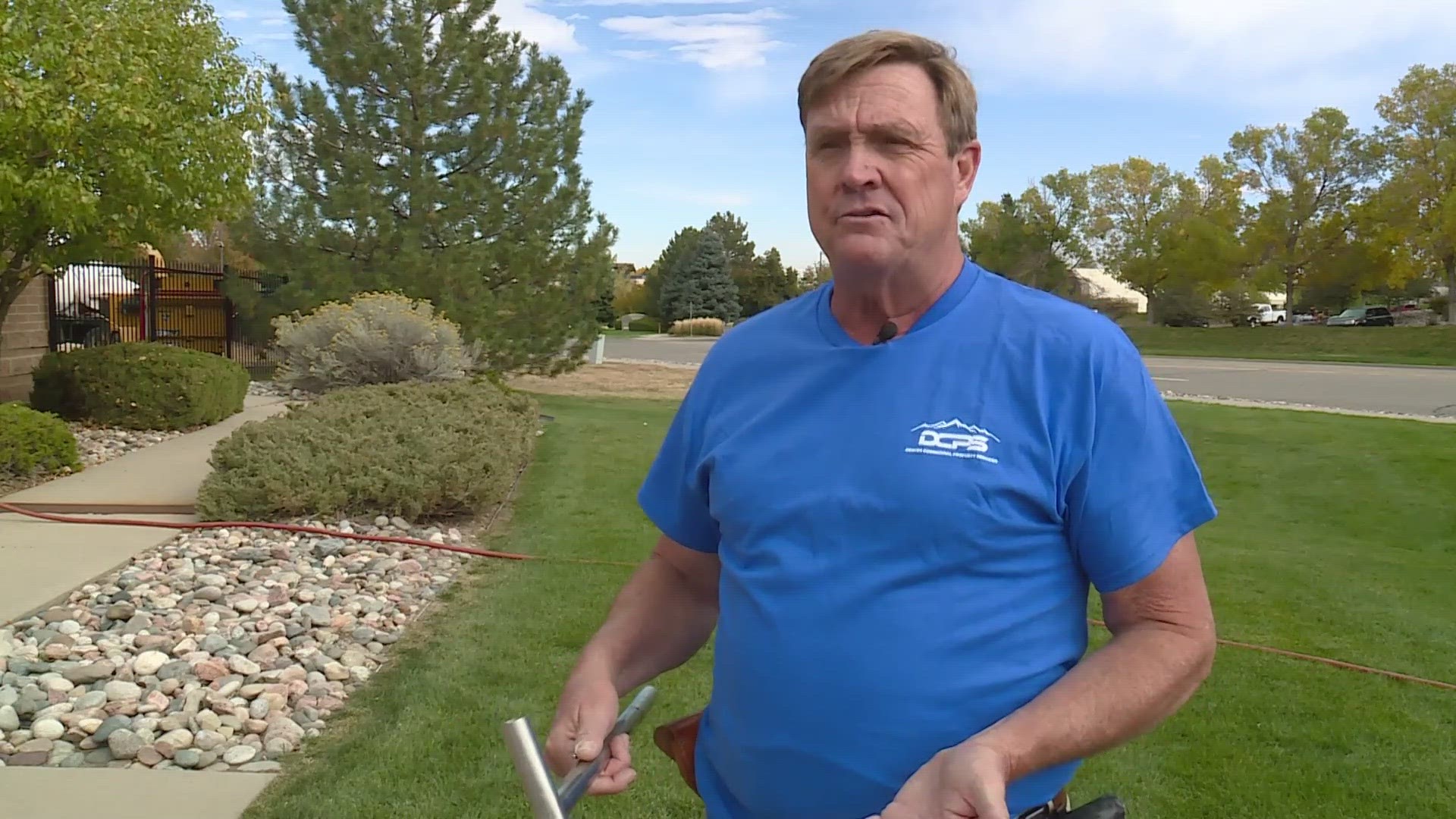DENVER — The Denver metro area and eastern Colorado plains are ready to have their first freezing temperatures of the season.
The National Weather Service issued a Freeze Warning from 12 a.m. to 9 a.m. Saturday morning. The warning area included nearly all of eastern Colorado including the Denver area.
Many Coloradans are wondering when they should winterize their sprinkler lines.
When should I turn off the system?
Grass in Colorado will begin to go dormant at the end of October and beginning of November.
9NEWS spoke with garden experts who say October is a good time to winterize sprinkler systems, especially once lows begin to drop below freezing at night and lawns require less water with daytime highs in the 60s.
However, the first Denver freeze forecasted this weekend will not be cold enough to damage sprinkler systems.
“In all the years I’ve been doing this, it has to stay 19, 20, 21 degrees for several hours for it to be an issue,” said Tony Hahn with Denver Commercial Property Services. He's been doing lawn care in Colorado for 40 years.
There are no concerning temperatures of that nature in the extended forecast, which currently runs through Oct. 26, and that type of cold usually doesn’t come until at least mid-November.
The start of November is usually a good time to blow out your sprinklers so you don't face a hefty sprinkler repair bill.
“I usually say try to get things shut off by Nov. 1, maybe the first or second week of November,” Hahn said.
Hahn said it's a good idea to cover the part of the sprinkler system that sticks out of the ground called a backflow preventer. Hahn said you can buy covers made specifically for them, but a dark blanket or towel should keep the pipe from freezing.
What about manually watering?
It may be beneficial to keep the water flowing for a few more weeks, into the start of November at least.
Hahn said a lawn’s root growth is critical in October. If your turf is too dry in the fall, you could pay the price with bald patches in the spring.
Even if you've already shut off your sprinkler system, you can water your trees and shrubs by hand periodically throughout winter so they don't dry out too much during stretches of warm weather.
“If you let your lawn go into the winter dry, then you’re just compounding problems,” Hahn said.

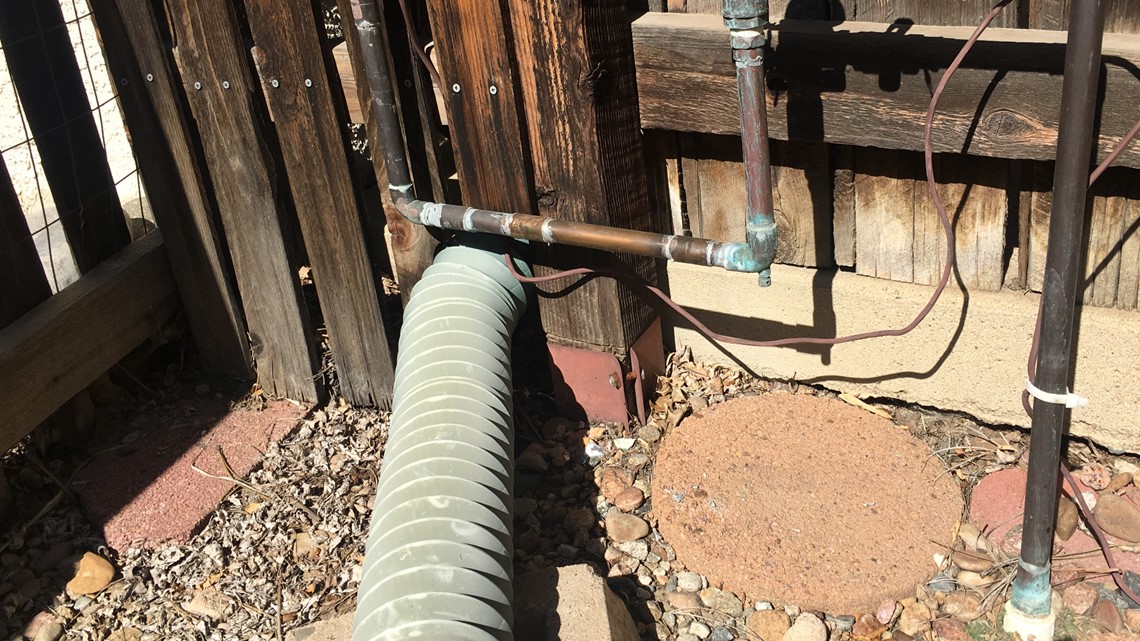
What's a backflow preventer?
It's a device that’s installed on your home’s water pipes that allows water to flow in one direction, but never in the opposite direction.
The purpose of a backflow preventer is to prevent drinking water from being contaminated due to backflow from your irrigation system.
The backflow preventer is usually a set of brass pipes located around your house that stick up out of the ground.
How do I turn off my system?
STEP 1: Locate the valve that shuts of the water to your irrigation system and turn it to the off position. (Not the whole house, just the irrigation.)
This irrigation valve can be located in the home, basement or crawl space. In some cases, if irrigation water is separate, the valve can be in an underground box out near the curb.


STEP 2: Once the water is shut off, drain the water out of your backflow preventer. This process is different with different systems.
If there are valves on the backflow preventer itself, turn the two blue levers a quarter turn and the two screws a quarter turn. You don't want them to be all the way shut or open.
Then, turn the water release valve at the end of the irrigation manifold to release the water.

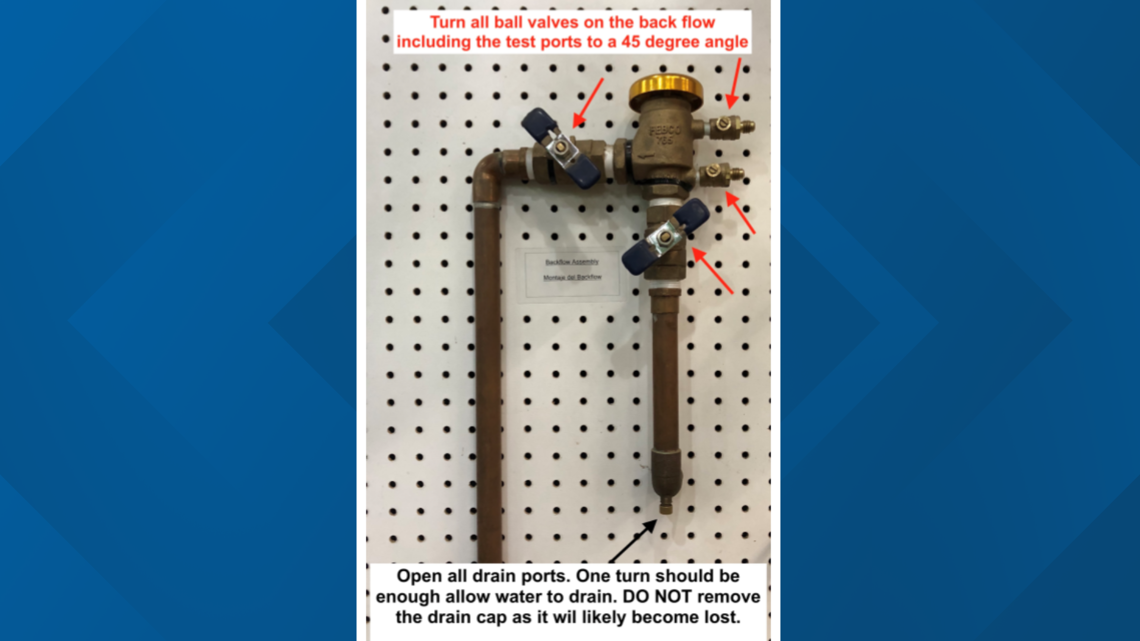

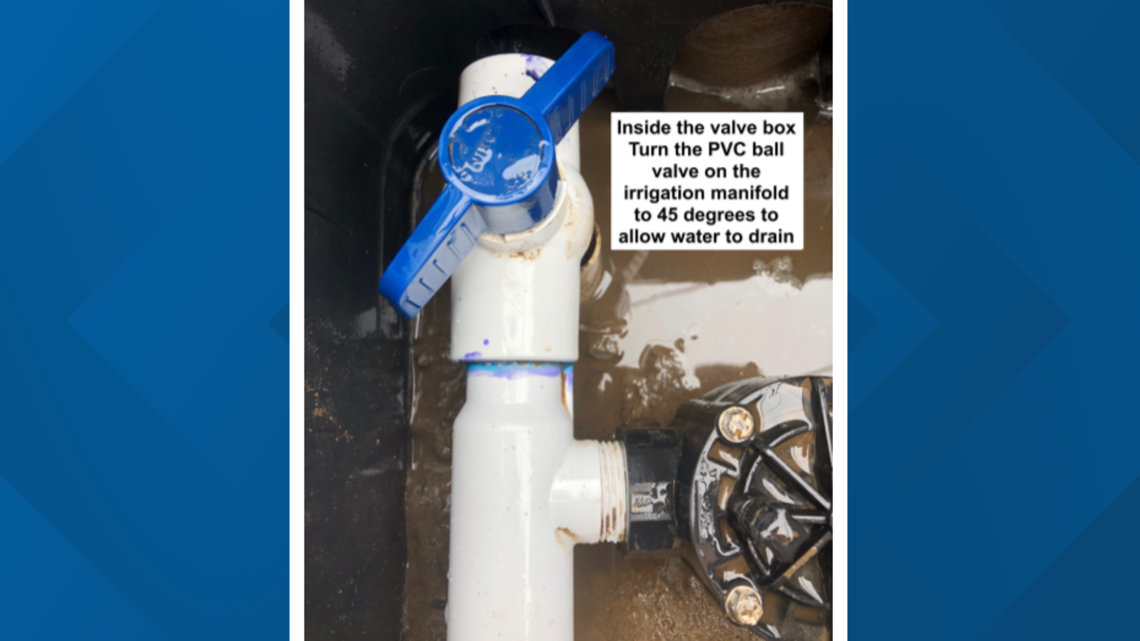
If there are no valves on the backflow preventer, there is likely a release valve at the bottom of a large capped PVC pipe. This requires a special tool to reach down and turn the knob that releases the water.

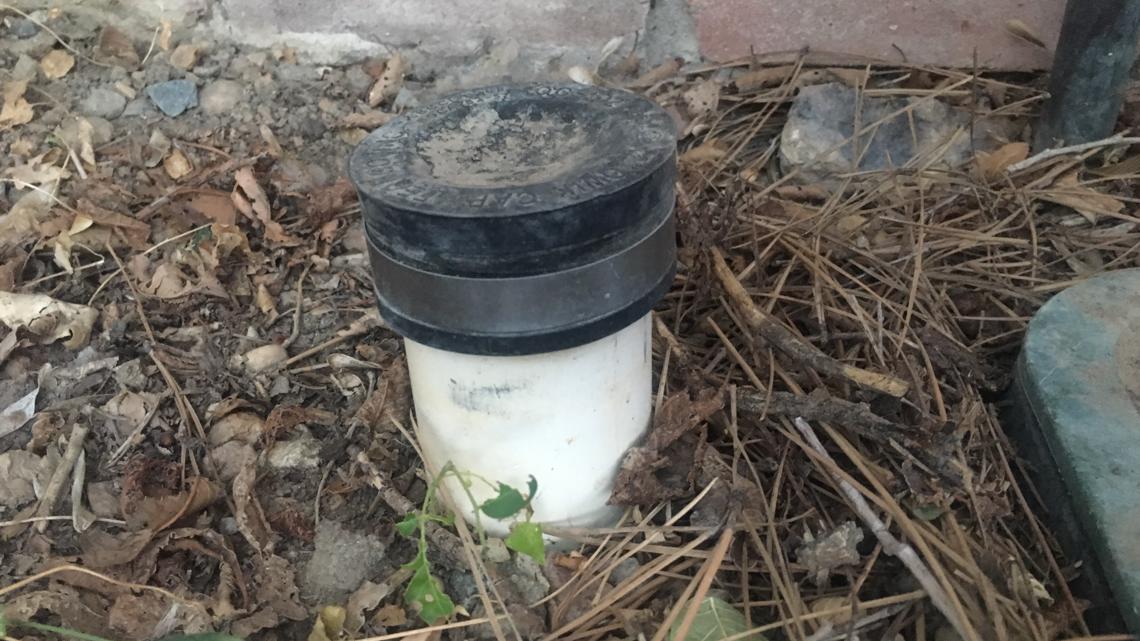

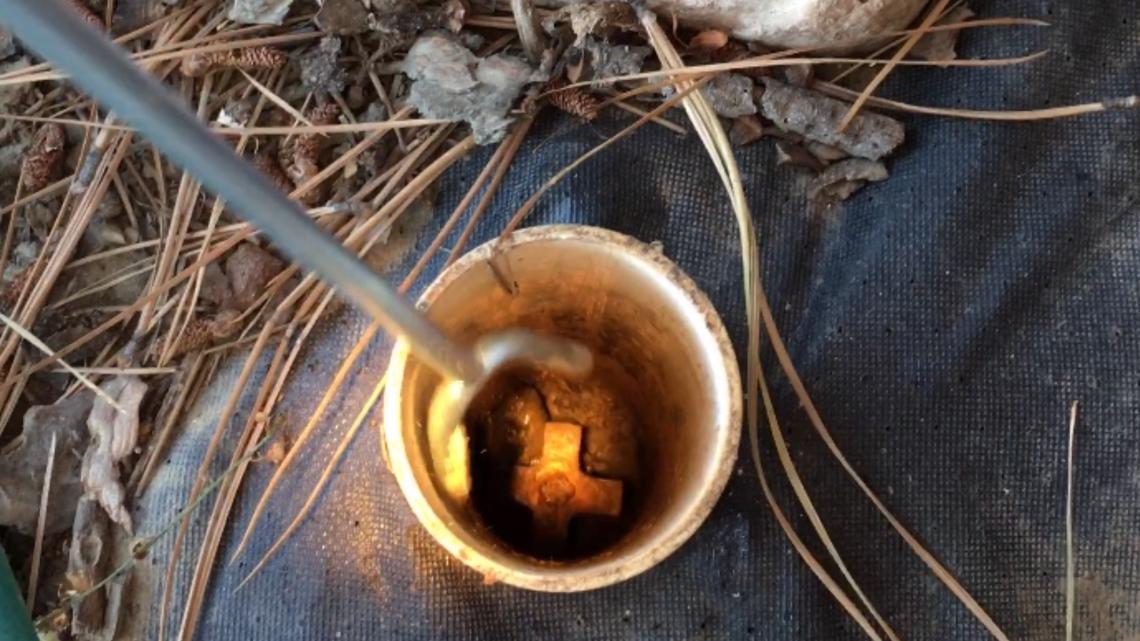
STEP 3: Once the water is off and the backflow preventer is drained, the next step is to cover it by wrapping it with towels and duct tape, and then drape a blanket over it.
Now that your sprinkler system is ready for winter, you may need to periodically water your lawn manually because of Colorado's dry climate.
The climate on the Front Range is dry, only averaging between 14 inches and 15 inches of precipitation in a whole year. An area that gets 10 inches or less would be classified as a desert.
Colorado's lawns don’t enter into winter mode until November and sometimes it's late November or even December. Until that happens, they need regular water, which doesn't normally come from Mother Nature on the Front Range.
SUGGESTED VIDEOS: Colorado Weather
9NEWS+
9NEWS+ has multiple live daily shows including 9NEWS Mornings, Next with Kyle Clark and 9NEWS+ Daily, an original streaming program. 9NEWS+ is where you can watch live breaking news, weather updates, and press conferences. You can also replay recent newscasts and find videos on demand of our top stories, local politics, investigations and Colorado specific features.
To download 9NEWS+ on Roku search for KUSA.
To download 9NEWS+ on Fire TV search for 9NEWS.

